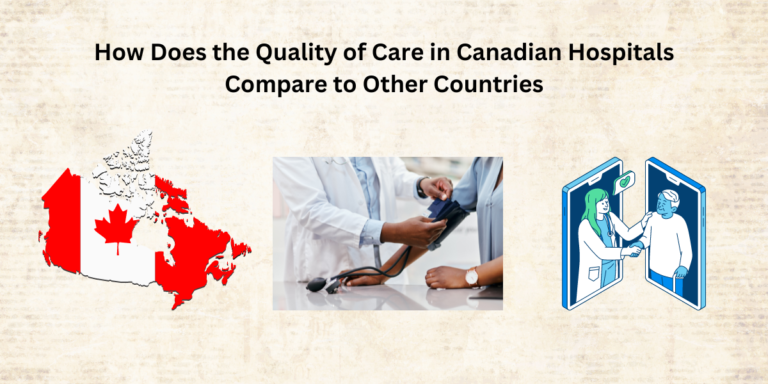Working Together to Improve Health Care for Canadians
Health care is a cornerstone of Canadian society, reflecting the country’s commitment to providing high-quality, accessible care for all its citizens. However, achieving and maintaining an effective health care system requires ongoing collaboration among various stakeholders, including government agencies, health care professionals, and communities. This blog post explores how these groups are working together to improve health care for Canadians, focusing on key strategies and initiatives that are driving progress.
1. Government and Policy Makers
Government bodies at federal, provincial, and territorial levels play a critical role in shaping health care policies and funding. Collaborative efforts among these entities ensure that health care services are not only adequately funded but also aligned with the needs of Canadians.
- Funding and Policy Frameworks: Governments allocate significant resources to health care, ensuring that hospitals, clinics, and other health care facilities are well-equipped and staffed. Policies are continually updated to address emerging health challenges and improve care delivery.
- Intergovernmental Collaboration: The Council of the Federation, which includes premiers from all provinces and territories, works together to tackle health care issues collectively. This collaboration leads to shared best practices and innovative solutions that can be implemented across the country.
2. Health Care Professionals
Doctors, nurses, allied health professionals, and support staff are on the front lines of health care delivery. Their expertise and dedication are crucial in providing high-quality care. Collaborative practices among health care professionals enhance patient outcomes and streamline care processes.
- Interdisciplinary Teams: Increasingly, health care is delivered by teams that include a range of professionals working together. This interdisciplinary approach ensures comprehensive care, addressing all aspects of a patient’s health.
- Continuing Education and Training: Health care professionals engage in ongoing education and training to stay current with medical advancements and improve their skills. Collaborative training programs foster a culture of learning and adaptation, critical for quality care.
3. Technological Innovation
Technology plays a pivotal role in modernizing health care and improving patient outcomes. Collaborative efforts between tech developers, health care providers, and policy makers are essential for integrating new technologies into the health care system.
- Electronic Health Records (EHR): The adoption of EHR systems has improved the accuracy and accessibility of patient information. Collaboration ensures that these systems are interoperable and secure, protecting patient privacy while enhancing care coordination.
- Telehealth Services: Telehealth has expanded access to care, particularly in rural and remote areas. Collaborative initiatives between health care providers and technology companies have made virtual consultations and remote monitoring more accessible and effective.
4. Community Involvement
Communities play a vital role in health care by advocating for their needs and participating in health initiatives. Engaging communities ensures that health care services are culturally sensitive and tailored to the unique needs of different populations.
- Public Health Campaigns: Community-driven public health campaigns educate people about important health issues, such as vaccination, healthy lifestyles, and disease prevention. Collaboration with local organizations amplifies these messages and encourages community participation.
- Patient Advocacy Groups: These groups work to ensure that the voices of patients are heard in health care policy and practice. By collaborating with health care providers and policy makers, they help shape services that better meet the needs of patients.
5. Research and Evidence-Based Practice
Research is fundamental to advancing health care. Collaboration among researchers, health care providers, and government agencies ensures that health care practices are based on the latest scientific evidence.
- Clinical Trials and Studies: Collaborative research initiatives drive innovations in treatment and care. Hospitals, universities, and research institutions work together to conduct clinical trials that lead to new therapies and improved patient outcomes.
- Evidence-Based Guidelines: Health care organizations develop and implement guidelines based on the latest research. Collaboration ensures that these guidelines are practical, effective, and widely adopted across different settings.
6. Addressing Health Inequities
Improving health care for all Canadians requires addressing the disparities that exist in the system. Collaborative efforts are essential to ensure that vulnerable and marginalized populations receive the care they need.
- Indigenous Health Initiatives: Collaborations with Indigenous communities focus on providing culturally appropriate care and addressing the specific health challenges these communities face. Programs are co-designed with Indigenous leaders to ensure they are effective and respectful.
- Socioeconomic Barriers: Efforts to reduce socioeconomic barriers to health care include partnerships between government agencies, non-profits, and community organizations. These collaborations aim to provide support such as affordable housing, food security, and access to mental health services.
7. Continuous Improvement and Innovation
The health care system must continuously evolve to meet the changing needs of the population. Ongoing collaboration among all stakeholders is crucial for fostering innovation and driving improvement.
- Quality Improvement Programs: Health care providers engage in continuous quality improvement programs that involve setting goals, measuring outcomes, and implementing changes. Collaborative efforts ensure these programs are comprehensive and effective.
- Health Care Conferences and Forums: Regular conferences and forums bring together health care professionals, researchers, policy makers, and community leaders to share knowledge and discuss the future of health care. These events promote networking and the exchange of ideas that lead to innovative solutions.
Conclusion
Improving health care for Canadians is a complex and ongoing process that requires the concerted effort of multiple stakeholders. Government agencies provide the necessary funding and policy frameworks, health care professionals deliver quality care, and communities ensure that services meet their unique needs. Technological innovation and research drive continuous improvement, while efforts to address health inequities ensure that all Canadians have access to the care they deserve. By working together, these groups are making significant strides in enhancing the health care system, ultimately improving the health and well-being of Canadians.







